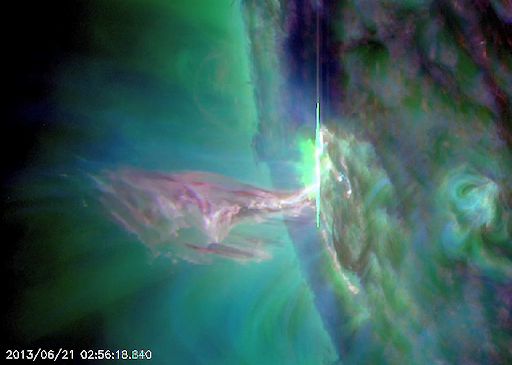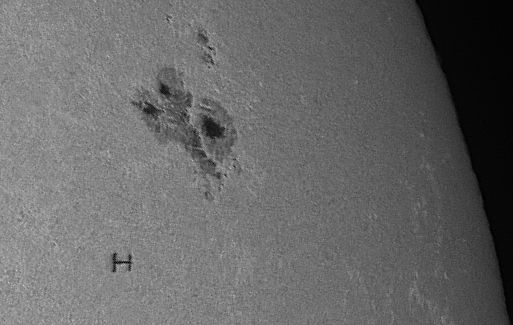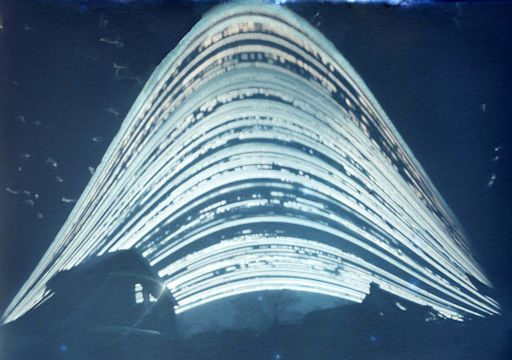When is the best time to see auroras? Where is the best place to go? And how do you photograph them? These questions and more are answered in a new book, Northern Lights - a Guide, by Pal Brekke & Fredrik Broms. | | |
SUMMER SOLSTICE: Today is the first day of northern summer. At 1:04 a.m. EDT on June 21st, the sun reached its highest point on the celestial sphere (declination = +23.5o) marking the start of summer in the northern hemisphere, and winter in the south. Happy solstice!
SOLSTICE SOLAR FLARE: This morning, June 21st at 03:16 UT, the sun itself marked the solstice with an M2-class solar flare from sunspot AR1777. NASA's Solar Dynamics Observatory photographed the extreme ultraviolet flash and a plume of material flying out of the blast site:

As sunspots go, AR1777 is neither large nor apparently menacing, yet it has been crackling with flares for days. Before it rotated over the sun's eastern limb on June 20th, it unleashed a series of farside flares and CMEs. Today's explosion was not Earth directed, but future explosions could be as the sun's rotation continues to turn AR1777 toward our planet. NOAA forecasters estimate a 30% chance of M-flares and a 5% chance of X-flares during the next 24 hours. Solar flare alerts: text, voice.
Realtime Space Weather Photo Gallery
CHINESE SPACE STATION CROSSES THE SUN: Earlier this week in the sunny skies above the south of France, China's experimental Tiangong-1 space station flew directly in front of the sun. Using a filtered 6-inch telescope, astrophotographer Thierry Legault recorded the station's silhouette alongside big sunspot AR1775:

"I recorded two transits--one on June 16 and another on June 17th," says Legault. "They show the Tiangong-1 with 3 taikonauts inside."
Most readers are familiar with the 450-ton International Space Station. Fewer, perhaps, know about China's 8.5-ton Tiangong-1 (Heavenly Palace-1). It was launched in Sept. 2011 to establish a foothold in Earth orbit for China's fledgling space program. Tiangong-1 was briefly boarded by taikonauts (Chinese astronauts) in June 2012, and a second group is onboard now. Three Taikonauts arrived on June 13, 2013, on a 15-day mission to practice rendevous and docking maneuvers and to gain experience living in space. Their expedition is attracting little attention in Western press, but it is being widely followed in China. Earlier this week, more than 60 million students and teachers at 80,000 Chinese schools watched a live lecture by the crew of the Tiangong-1.
According to some reports, the Tiangong-1 will be de-orbited in late 2013 to make way for more advanced experimental stations, Tiangong-2 and Tiangong-3 in the years ahead. Ultimately, China hopes to place an Mir-class station in orbit by 2020.
See the Tiangong-1 before it goes! Spaceweather's Simple Flybys app turns your smartphone into a field-tested space station tracker. It works for both the ISS and the Tiangong-1.
SIX MONTHS IN A BEER CAN: The summer solstice has arrived, and in the Netherlands that means it's time to open up beer cans around the Philippus Lansbergen Observatory in Middleberg. It's not what you think! There's no beer inside, only photo paper. Every year, astronomers at the observatory help members of the public make beer-can solargraphs to record the motion of the sun across the sky. Yesterday, after six months in the field, the solargraphs were opened, and this is what they revealed:

"This shows the movement of the Sun with 1 single shot of 6 months exposure time," explains Jan Koeman of the Philippus Lansbergen Observatory. "We deployed the beer-can solargraphs in December and opened them yesterday."
The lowest arcs were traced by the winter sun of Dec. 2012. The highest arc was made by the sun yesterday on the eve of the 2013 summer solstice. Occasional gaps are caused by clouds.
"It seems the sun has been shining a lot the last 6 months," notes Koeman. "This does not match with the general view of cloudy weather in the Netherlands!"
6-month Solargraph How-to Guides: #1, #2, #3
Realtime Noctilucent Cloud Photo Gallery
[previous years: 2003, 2004, 2005, 2006, 2007, 2008, 2009, 2011]
Realtime Aurora Photo Gallery
Realtime Comet Photo Gallery

